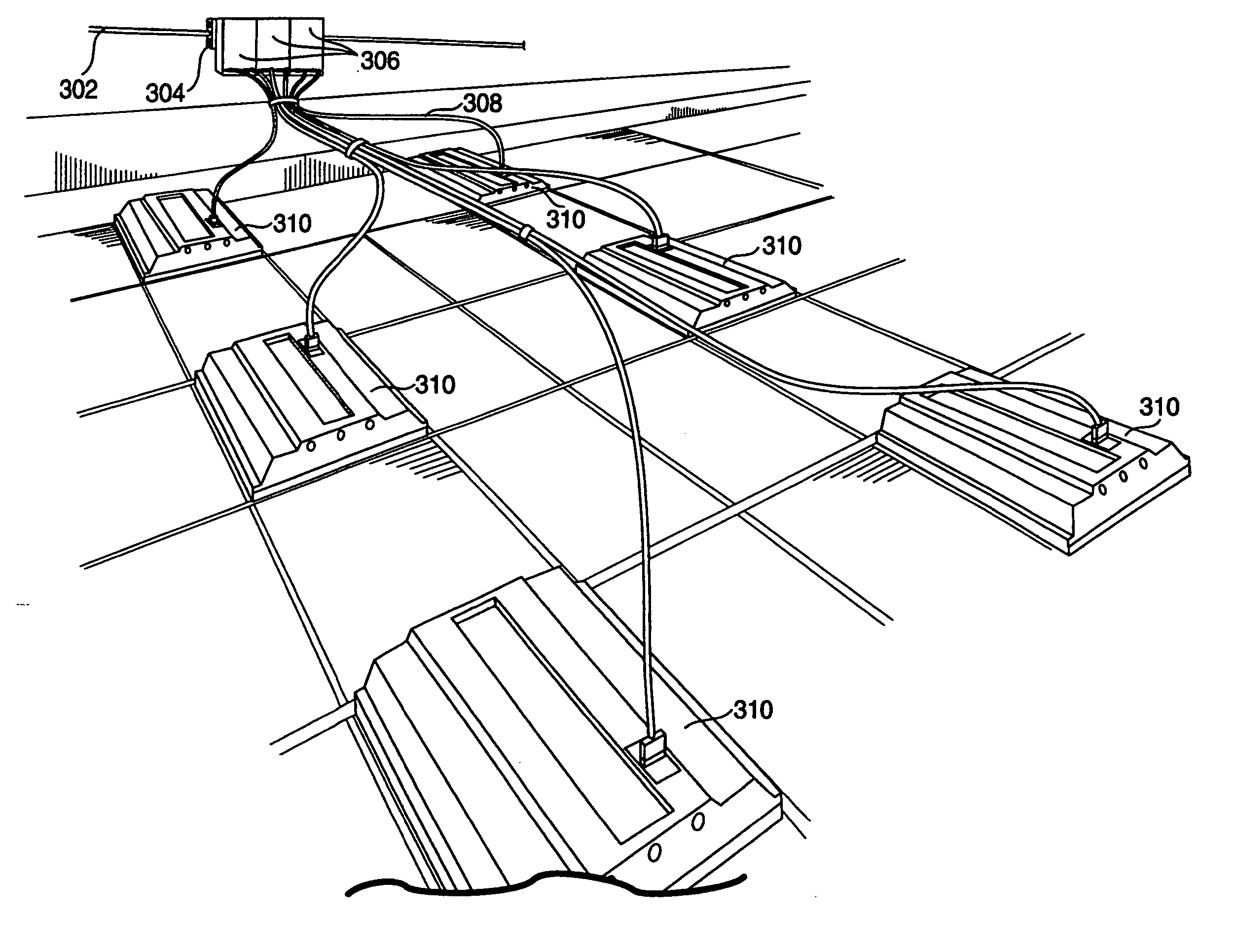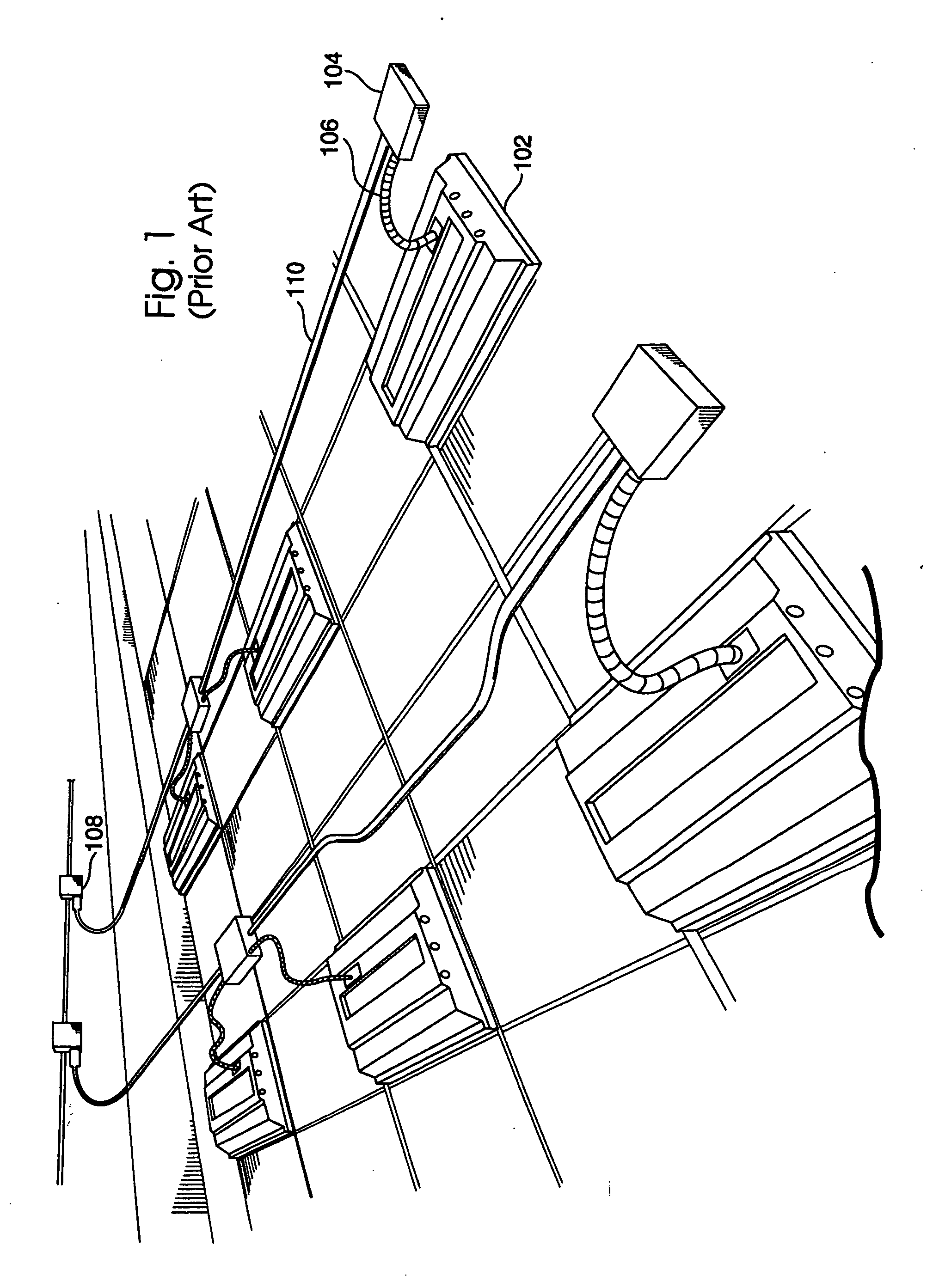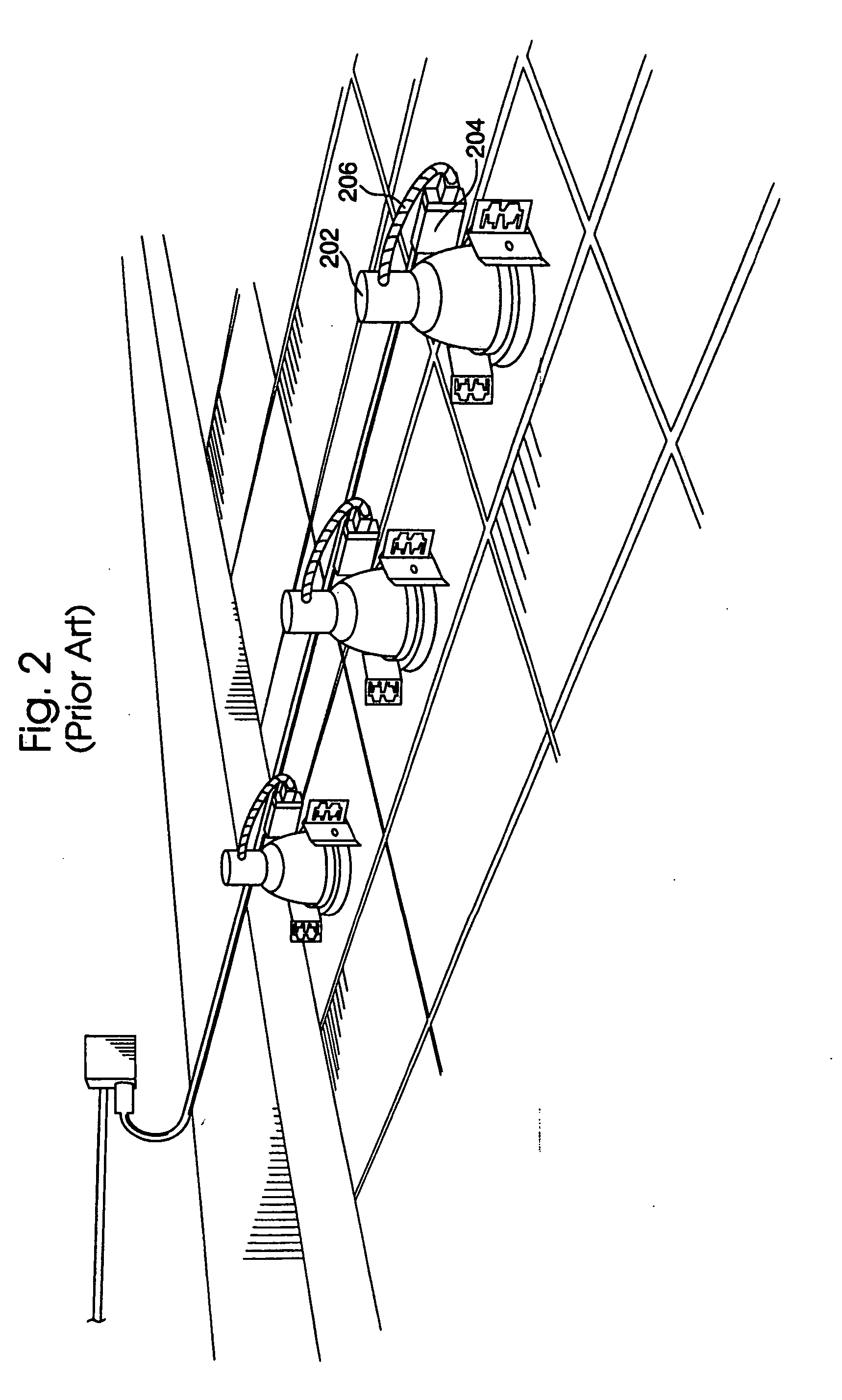Constant current class 3 lighting system
- Summary
- Abstract
- Description
- Claims
- Application Information
AI Technical Summary
Benefits of technology
Problems solved by technology
Method used
Image
Examples
Embodiment Construction
[0025] The present invention is a lighting system having a power supply, at least one luminaire, and a flexible cable for connecting the power supply to the luminaires. The power supply preferably includes a power supply input to receive a power line signal, a circuit to convert the power line signal to a substantially constant-current, high-frequency signal, and a power supply output to output the substantially constant-current, high-frequency signal. Each luminaire also preferably includes a lamp, a housing to hold the lamp, luminaire input to receive the high-frequency signal from the power supply, and a lamp driver circuit configured to use the received output signal to operate the lamp.
[0026]FIG. 3 shows one exemplary embodiment of the lighting system. In this embodiment, a junction box 304 is supplied with a power line signal (typically, either a 60 Hz@120V or 277V signal) through a pair of power line conductors and a safety ground via a steel armored conduit 302. In the depi...
PUM
 Login to View More
Login to View More Abstract
Description
Claims
Application Information
 Login to View More
Login to View More - R&D
- Intellectual Property
- Life Sciences
- Materials
- Tech Scout
- Unparalleled Data Quality
- Higher Quality Content
- 60% Fewer Hallucinations
Browse by: Latest US Patents, China's latest patents, Technical Efficacy Thesaurus, Application Domain, Technology Topic, Popular Technical Reports.
© 2025 PatSnap. All rights reserved.Legal|Privacy policy|Modern Slavery Act Transparency Statement|Sitemap|About US| Contact US: help@patsnap.com



